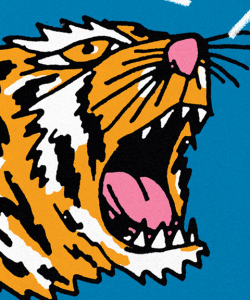GalleyCrush: Machete

Tomás Q. Morín’s Machete, forthcoming from Knopf on October 12, 2021.
Jump to navigation Skip to content

Tomás Q. Morín’s Machete, forthcoming from Knopf on October 12, 2021.
In this 2017 craft talk for Hugo House, Terrance Hayes reads from his book American Sonnets for My Past and Future Assassin (Penguin Books, 2018) and discusses the work and writing strategies of the late poet Lynda Hull.
“Fernando Pessoa in many ways was a writer of not so much his own time, but even more of a future time.” Translator and scholar Richard Zenith speaks about the life and work of Portuguese poet Fernando Pessoa collected in his new book, Pessoa: A Biography (Liveright, 2021), in this conversation with poet, editor, and translator Patricio Ferrari for Powell’s Books.
In Paul Tran’s “Progress Report,” published on Literary Hub and featured in their forthcoming debut poetry collection, All the Flowers Kneeling (Penguin Poets, 2022), the poem catalogues the speaker’s life while filling out a form: “Photograph of the ’93 Mazda MPV he reportedly turned into an ice cream truck. / I marked Humor. / Holes where the nails had been in the wall. / I marked Self-harm.” The poem, made up of single end-stopped lines, uses a call-and-response technique to reveal new information as it progresses. Write a poem in which the speaker is filling out a form—perhaps a progress report, an immigration document, or a demographic survey. How can you use the poem’s form as a way of highlighting an important event?
“As with all great works of literature, each time we go back to it, we learn something new, we notice something new,” says Paul Muldoon in this video speaking about one of his favorite writers Robert Louis Stevenson for the Literature Matters: Reading Together series created by the Royal Society of Literature.
In C. K. Williams’s poem “Marina,” published in the New Yorker in 2005, the speaker is reading essays by Marina Tsvetaeva as a bug makes its way across the table. As the poem progresses, lines from Tsvetaeva’s essays are interlaced with descriptions of the bug dragging its transparent wings behind it, and the bug becomes a metaphor for her difficult life. “‘The soul is our capacity for pain.’ // When I breathe across it, / the bug squats, quakes, finally flies. / And couldn’t she have flown again, / again have been flown?” Write a poem involving lines from a writer you admire. Try, as Williams does, to elucidate or challenge the featured lines.